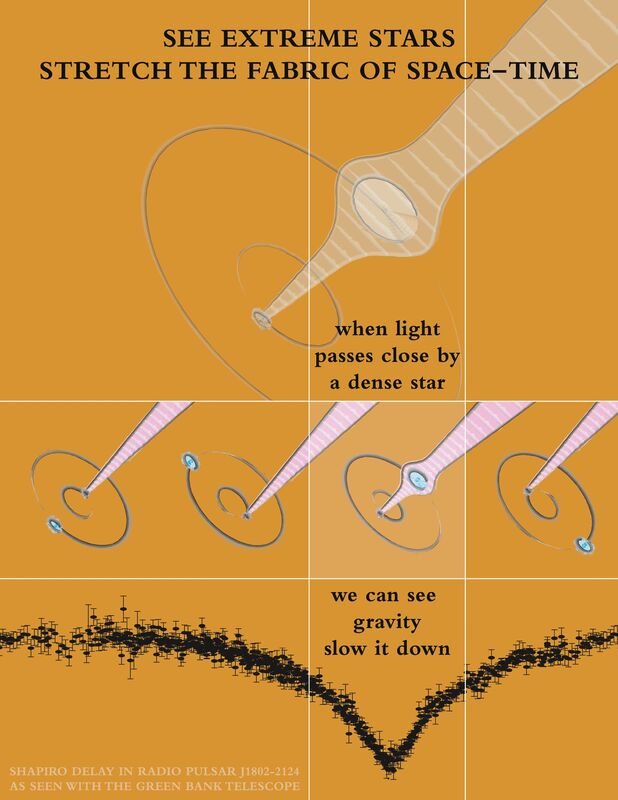Radio Pulsar / White Dwarf
Description
Radio pulsars and white dwarf stars are formed when stars cave in and die. Both pulsars and white dwarfs are extremely massive and compact: pulsars are 500.000 times heavier than the earth, but only 10 miles in diameter. That means a coffee mug filled with 'pulsar' weighs as much as the entire Mt. Everest! Their density and gravitational pull are gigantic, and stretches space and time in their vicinity. When you look at a radio pulsar passing behind a white dwarf, you can actually see its light slow down as it struggles past the white dwarf.
Shapiro delay is prominent in this plot of time-of-arrival offsets versus orbital phase. Shown are the residuals for the best-fit model that incorporates all Newtonian and general-relativistic radio-pulsar and binary motion characteristics but with the Shapiro delay parameters removed. As the radio pulsar moves behind the white dwarf, pulses are delayed by up to 40 microseconds. PSR J1802-2124 has been timed over the last 2 years with GBT+GASP at L-band.
Creator
Legacy Astronomical Images
Rights
NRAO/AUI/NSF does not hold full copyright for this image. Contact the archivist for details.
Type
Legacy Astronomical Image
Object Name
PSR J1802-2124
Photo Credit
Joeri van Leeuwen (UBC), Bryan Jacoby (NRL), Rob Ferdman (UBC)
Investigators
Joeri van Leeuwen (UBC), Bryan Jacoby (NRL), Rob Ferdman (UBC)
Telescope
Green Bank Telescope (GBT)
Type of Observation
continuum
Band
L
Wavelength
20 cm
Frequency
1.4 GHz
Center of Image
RA 18:2:5.000, Dec: -21:24:3.000 (J2000)
Field of View
0.016667 x 0.016667 degrees
Notes
Contact the archivist for a high resolution tif of this image.
Series
Galactic Sources Series
Unit
Pulsars/Neutron Stars Unit
Citation
Legacy Astronomical Images, “Radio Pulsar / White Dwarf,” NRAO/AUI Archives, accessed April 1, 2025, https://www.nrao.edu/archives/items/show/33476.

